Translate this page into:
Project Oxamb: Fitment of an Iskra oxygen system into a crash ambulance
Abstract
Aircraft components undergo extensive testing prior to installation and consequently are extremely reliable, with few failures. When an aircraft is de-commissioned, many such valuable components can be salvaged and put to good use for betterment of the system. This paper presents the methods used for successful adaptation of the oxygen system from the Iskra aircraft to be fitted into a Swaraj-Mazda ambulance. The authors have so far converted three ambulances. After fitment, the oxygen system has been found to be functioning well, without problems, and has greatly increased efficiency of oxygen delivery to patients.
Keywords
Oxygen
ambulance
Swaraj-Mazda ambulances supplied to the Indian Air Force do not have a pre-fitted oxygen system available. Oxygen is usually made available through an oxygen cylinder and related fittings carried inside the ambulance. This arrangement has a few problems, which have been enumerated in the following paragraphs.
There is no arrangement for clamping the oxygen cylinder to the ambulance body, hence requiring it to be carried on a trolley at the time of loading the patient. This arrangement is cumbersome at its best and usually inadequate.
This trolley being loose tends to move when the ambulance is being driven, causing the oxygen hose to be dislodged or displaced. In addition, the fittings, while adequate for static use in the Station Medicare Center (SMC), tend to leak in the dynamic environment of a moving ambulance.
Under these conditions, the total endurance of the single cylinder of oxygen carried in the ambulance is approximately half an hour, which is quite inadequate. In addition, this arrangement caters for a single patient only. Thus, in case of an ejection or crash involving two pilots, this arrangement was unlikely to suffice.
Iskra aircraft which were in use at this base are being phased out due to life expiration of the airframe. The oxygen systems from these aircraft are still usable. It was envisaged that if the oxygen system from the Iskra aircraft could be fitted into the ambulance, it would provide a stable platform for oxygen delivery. Since the system is aircraft rated, with a very high Mean Time Between Failure (MTBF), it was expected to give trouble free service in the times to come. As the oxygen system would otherwise be phased out with the aircraft, this comes at no cost to the exchequer, other than incidental expenses. The system is rated for a dynamic environment and would thus be expected to run equally well in an ambulance, which undergoes much less G loads than an aerobatic rated aircraft.
Material and Methods
Before fitment in the ambulance, a snag analysis of the Iskra oxygen system was done for the past five years to determine the MTBF and the common snags to be expected. This was important because it is expected that spare parts for the system are not likely to be available after the aircraft is phased out. Also, after such an analysis, spare parts which are likely to be required could be retained at base rather than be disposed off. A detailed snag analysis indicated a failure rate of 4.06±0.90 (mean±SB) per 1000 flying hours. All snags were discovered only during routine servicing. No snag had ever been reported while flying. It was felt that the snag rate was low enough to make the project viable.
It was decided that since the oxygen system caters to two pilots in the aircraft, the whole system can be fitted into the ambulance and could simultaneously supply oxygen to two patients. The endurance of the system according to specifications [1] is 3:40 h for a single pilot and would be expected to be approximately half of this for two pilots, when breathing 100% oxygen.
A block diagram indicating the functioning and fitment of the oxygen system is placed at Fig 1. All three high pressure cylinders were mounted in the ambulance. This was done in brackets provided in the ambulance for keeping bottles (Fig 2). Experience of operators [2] indicated that these brackets were seldom used in routine operations. Additional strengthening brackets (Fig 2) were provided to ensure that the cylinders do not shake during movement of the ambulance. These were fabricated out of aluminium sheets and secured to the body of the ambulance using blind rivets (Fig 2).
The three cylinders were connected using non-return valves (NRVs), to facilitate charging from a single charging point, as well as supply to a single ‘main’ supply valve. This arrangement is the same as that available in the aircraft and needed no modification.
The single charging point (Fig 3) was made available at the rear door of the ambulance for ease of operation. This was fitted with a charging point compatible with the Kiran aircraft, so that it can be charged using a Kiran, oxygen trolley.
The main ON/OFF valve was fitted on the existing ‘first aid box’ provided with the ambulance (Fig 4). This way the valves could be housed inside the box and would not foul with the patient or other equipment. The same box was used to house the combined content gauge and ‘dolls eye’. Two separate gauges were installed, one for each patient (Fig 4).
Oxygen regulators (Fig 5) were fitted near the head end of the stretchers and masks were connected to them. Again, two separate regulators were installed, one for each patient. The oxygen regulators are to be kept locked at 100% oxygen setting, for the patient to receive oxygen. The fitment of regulators was done using rivets to the metal sheet of the ambulance body. No other special fitment was found necessary. Positive pressure breathing can be provided by turning control knobs (Fig 5) in an anticlockwise direction.
Oxygen is delivered using standard cat-D ‘P’ and ‘Q’ aviation masks. These were anchored to the patients using elastic bands.
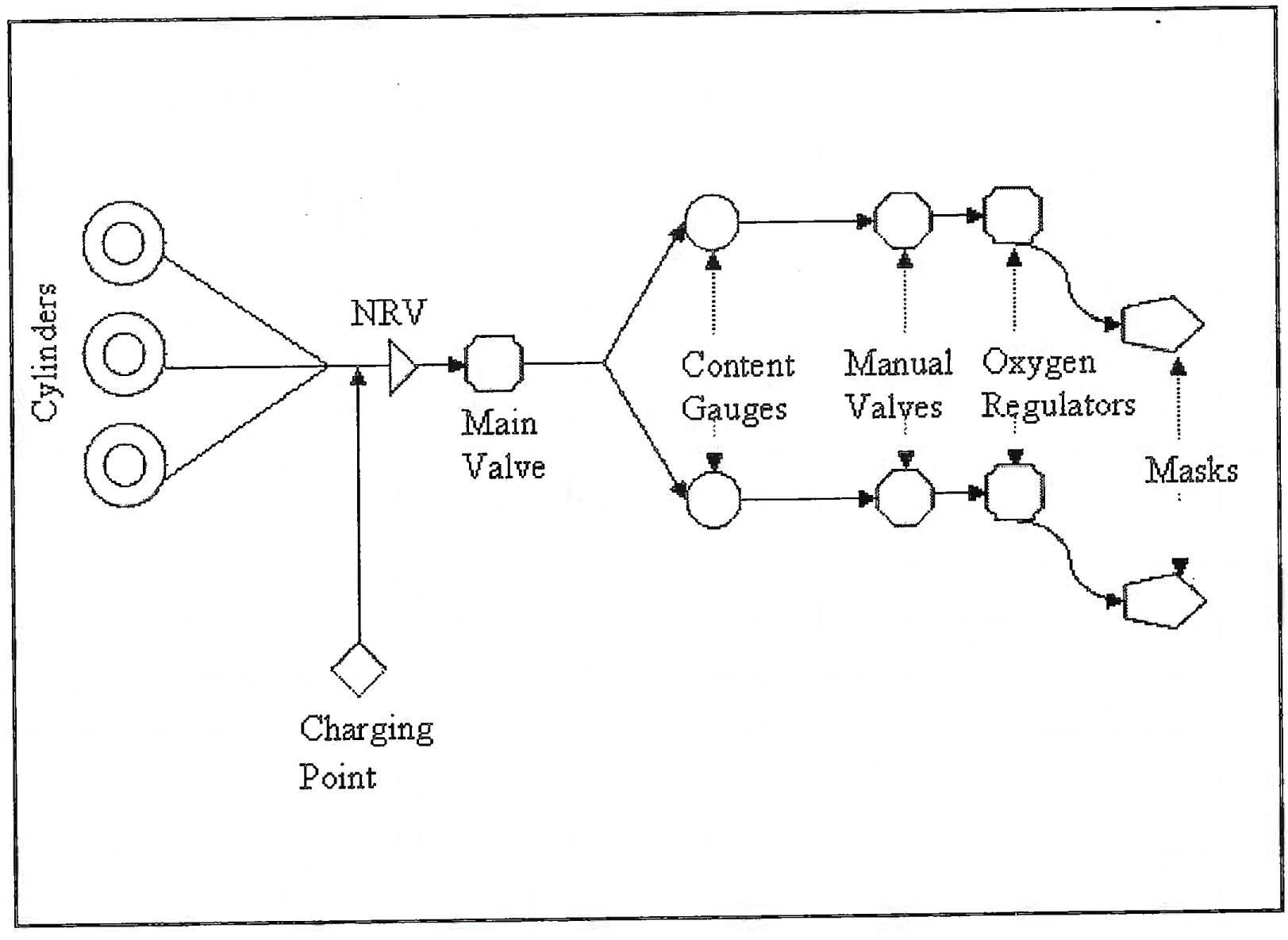
- Block diagram of oxygen system
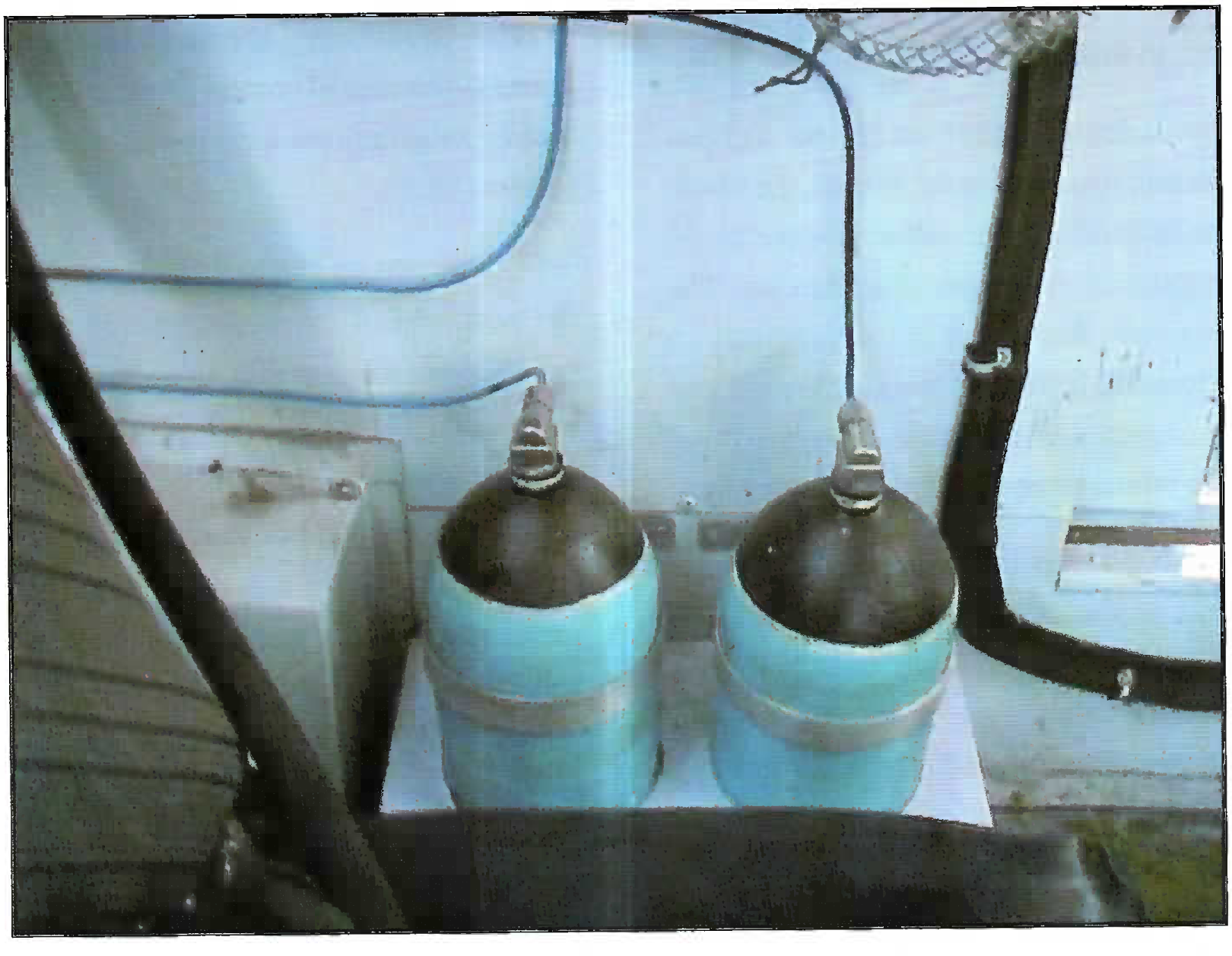
- Oxygen cylinders
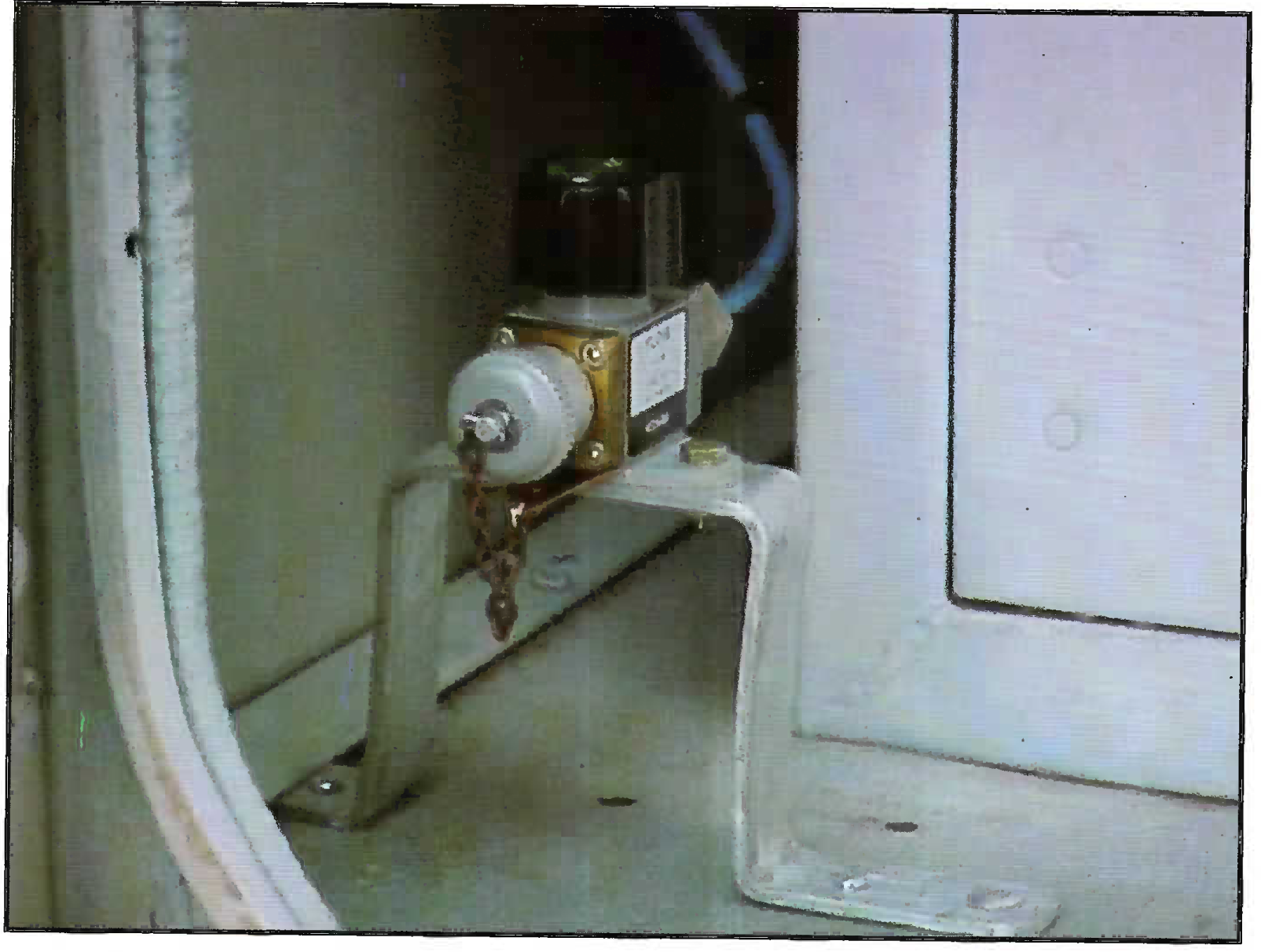
- Charging point
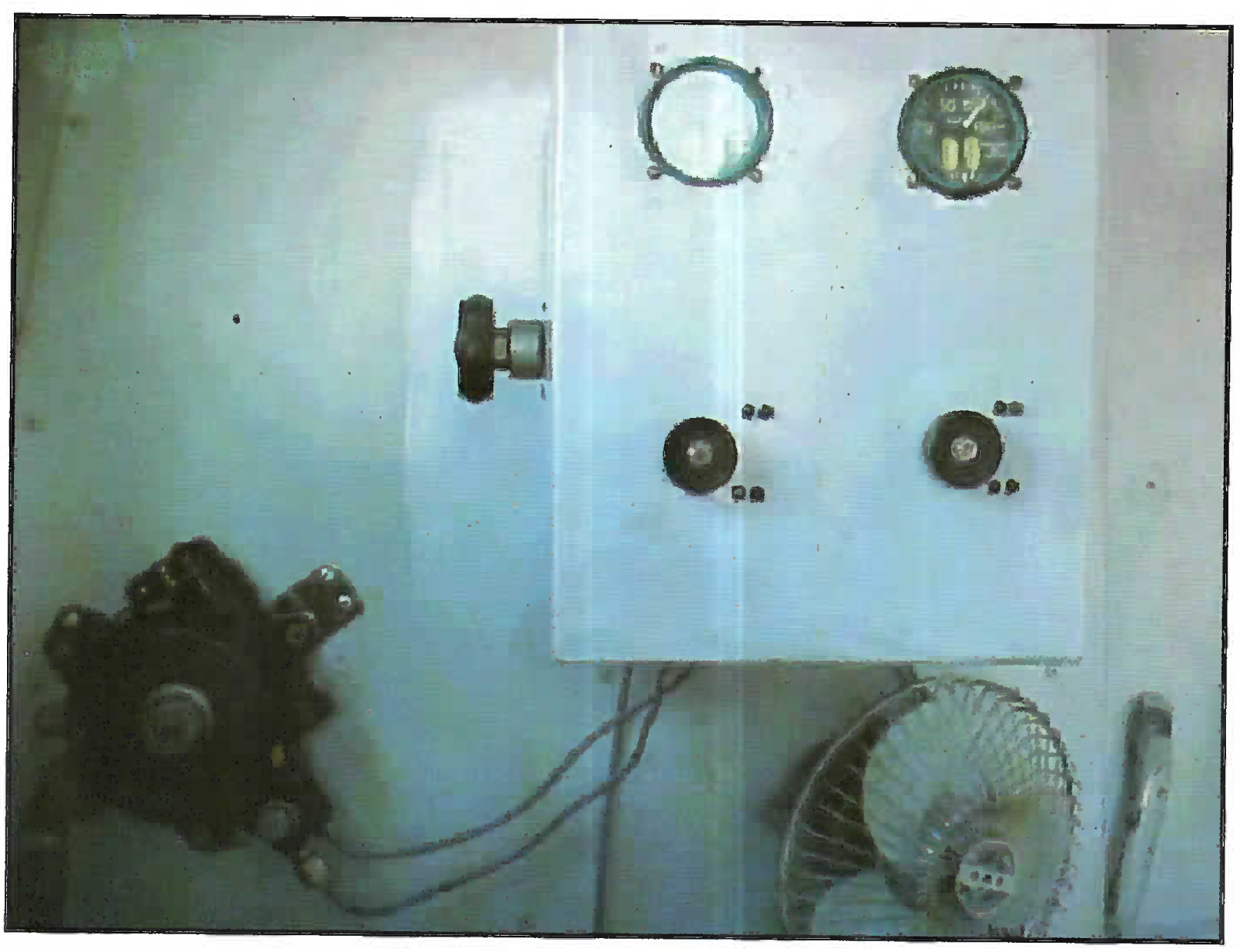
- On/Off valve and dolls eyes
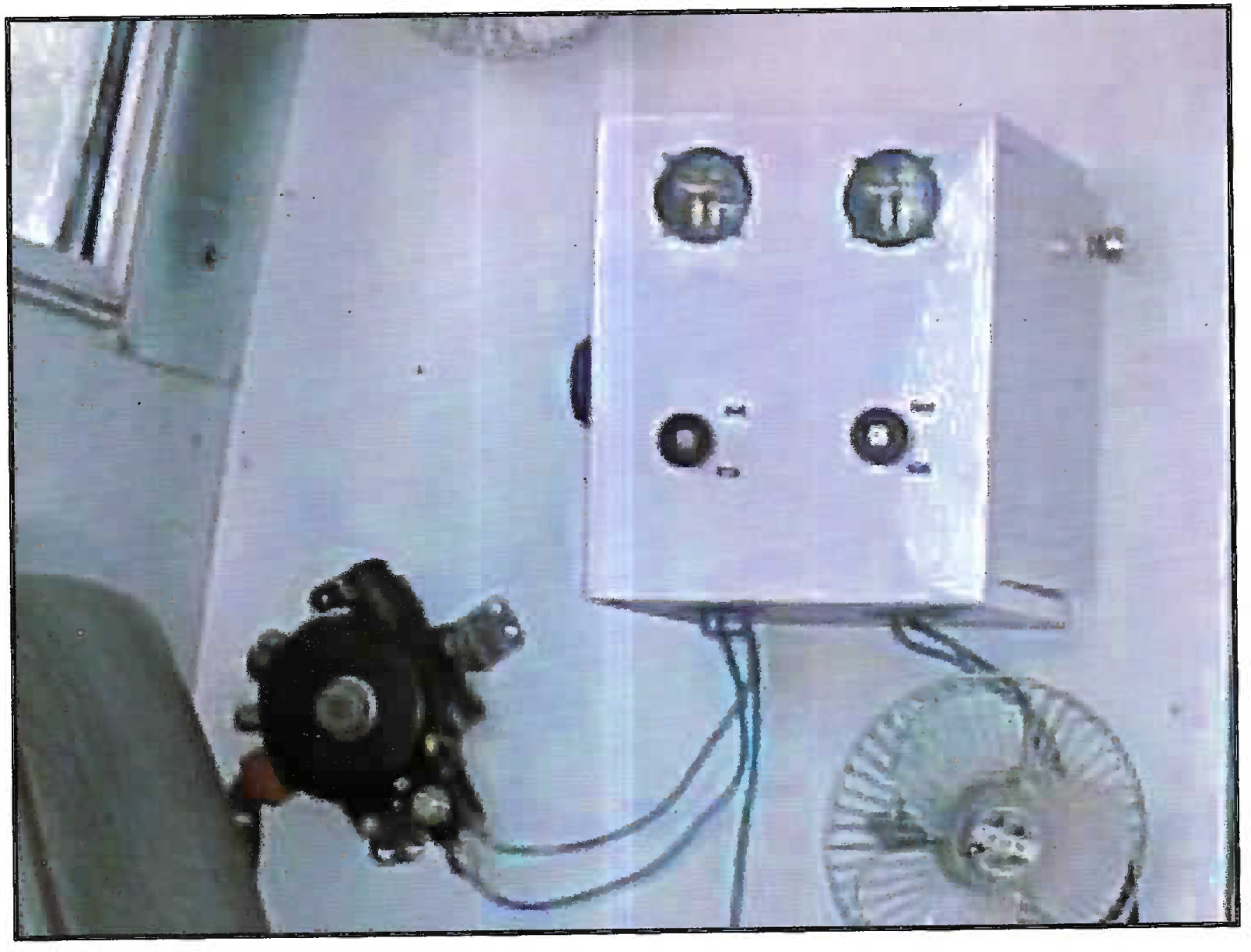
- Oxygen regulator
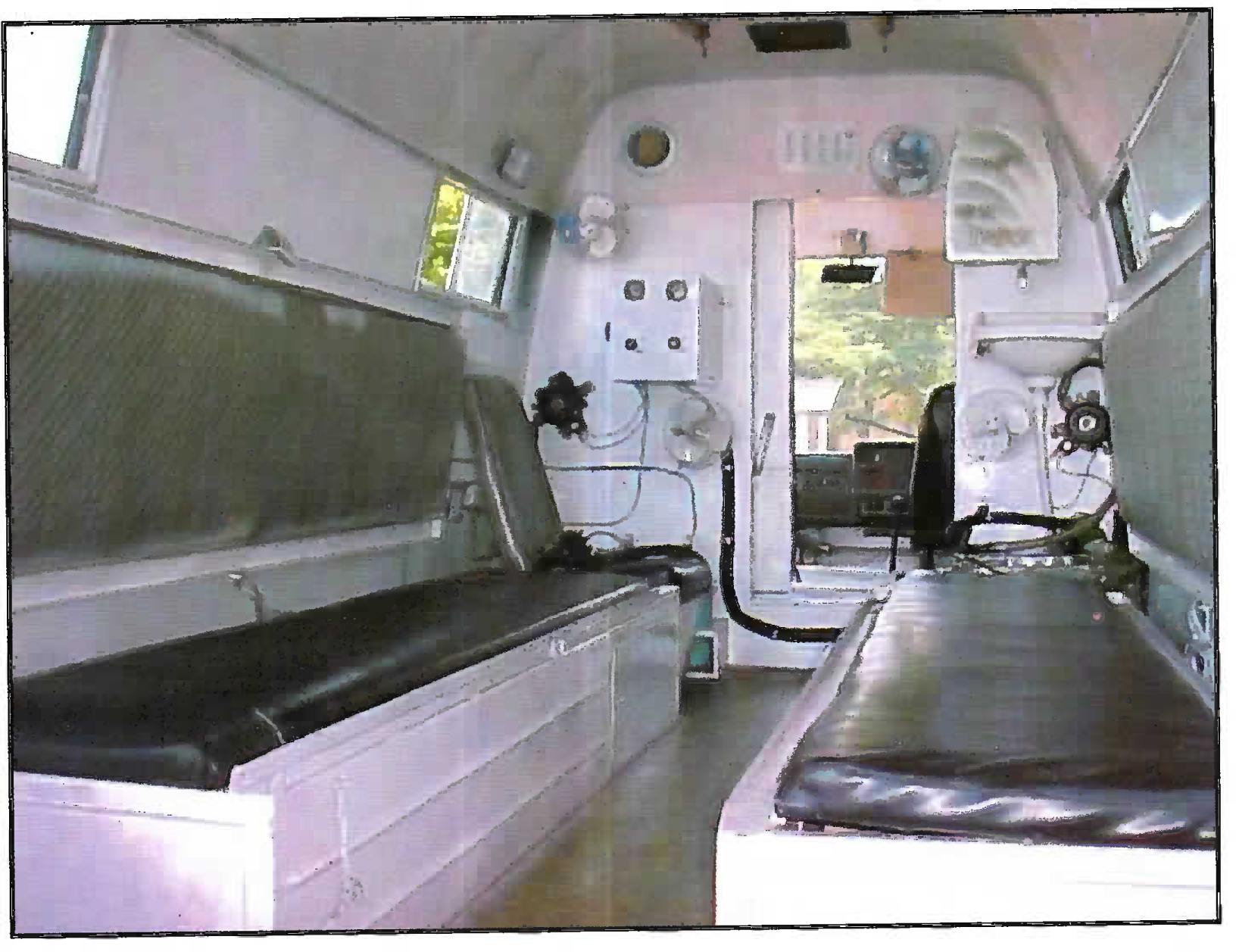
- The complete system fitted in the ambulance
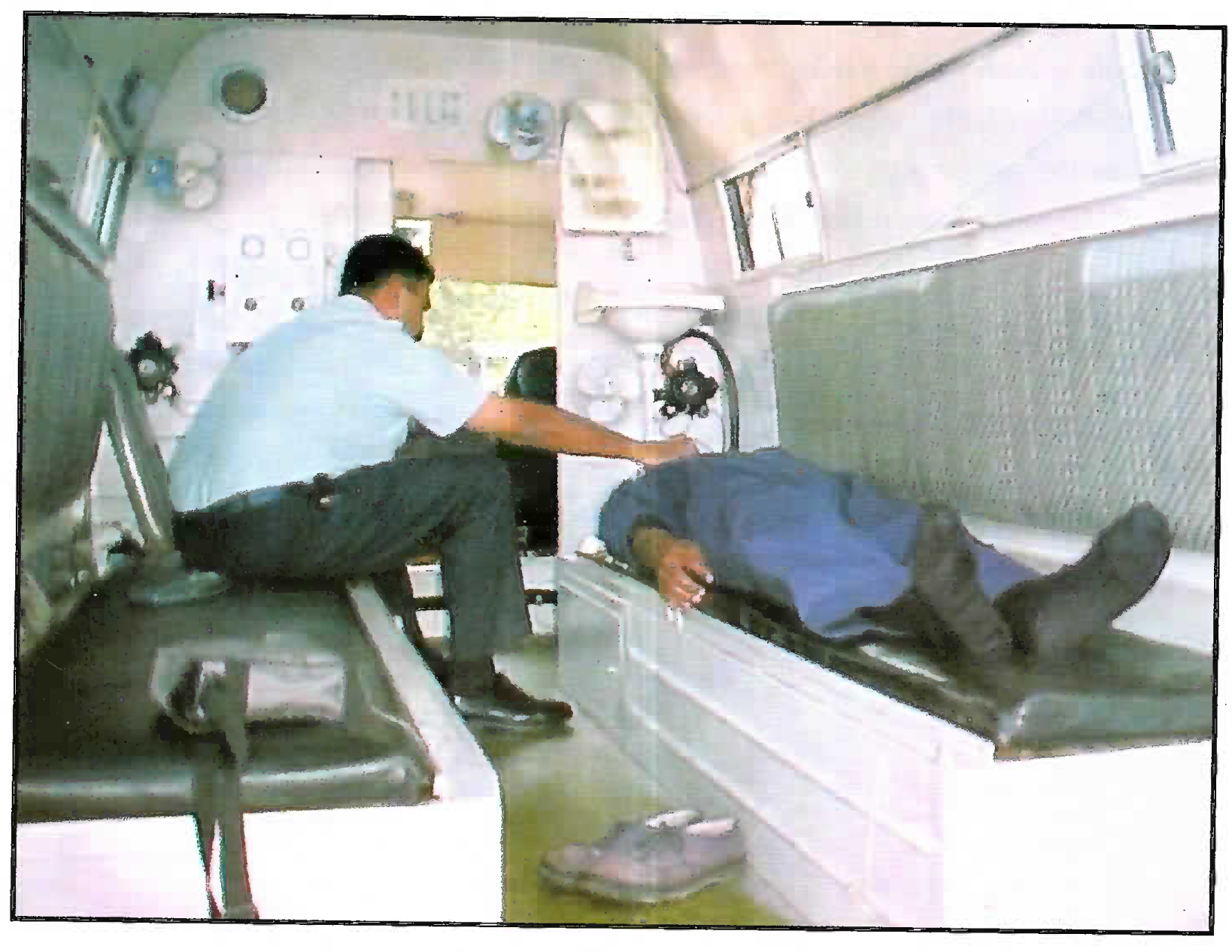
- Administering oxygen
After fitment (Figs 6 and 7), the system was tested initially in static settings. Subsequently, the ambulance was taken for a test run, when the oxygen system was tested in a dynamic setting. In addition, medical personnel using the system were questioned to determine the ease of use and usefulness of the system.
Results and Discussion
Snag analysis of the Iskra oxygen system for the past eight years revealed that there were no snags noticed during the operational use, i.e. flying, was nil. Snags were detected only during servicing and related only to leaks from three components, i.e. the pressure reducer, contents gauge and the oxygen regulator. Moreover, the snags were related directly to the hours of usage. As the total number of hours for which oxygen is likely to be used in the ambulance is very little (-70-80 hrs/yr), it can be projected that the system is likely to develop less than one snag per year, which is quite acceptable.
The Iskra oxygen system was successfully fitted in the Swaraj-Mazda ambulance, with little modification and at no additional cost. The system could be successfully charged using a Kiran aircraft oxygen trolley. It was found to be without leaks both during static conditions and during dynamic test runs. Medical personnel operating the system found it much easier to use than the previous system and found it much more useful.
In view of the above, installation of Iskra oxygen system into the Swaraj-Mazda ambulance is useful, cost-effective and practical. It is envisaged that this system would vastly improve the quality of care available, while being less cumbersome than the previous system. Lastly, the system would be much more reliable than the existing system.
Acknowledgements
The authors would like to acknowledge the efforts of MWO SN Singh and his team, who fitted the oxygen system on the ambulance after removing it from the Iskra aircraft. We would also like to take this opportunity to acknowledge the hard work of Sgt Sinha SK and his team, who did the necessary modifications to the ambulance for fitment of the oxygen system.
References
- Technical description, Installation and Maintenance Instruction of oxygen apparatus Type KP-28M. Published by Polskie Zakłady Lotnicze, Warsaw. Technical Publication No 2154/55 Indian Air Force






